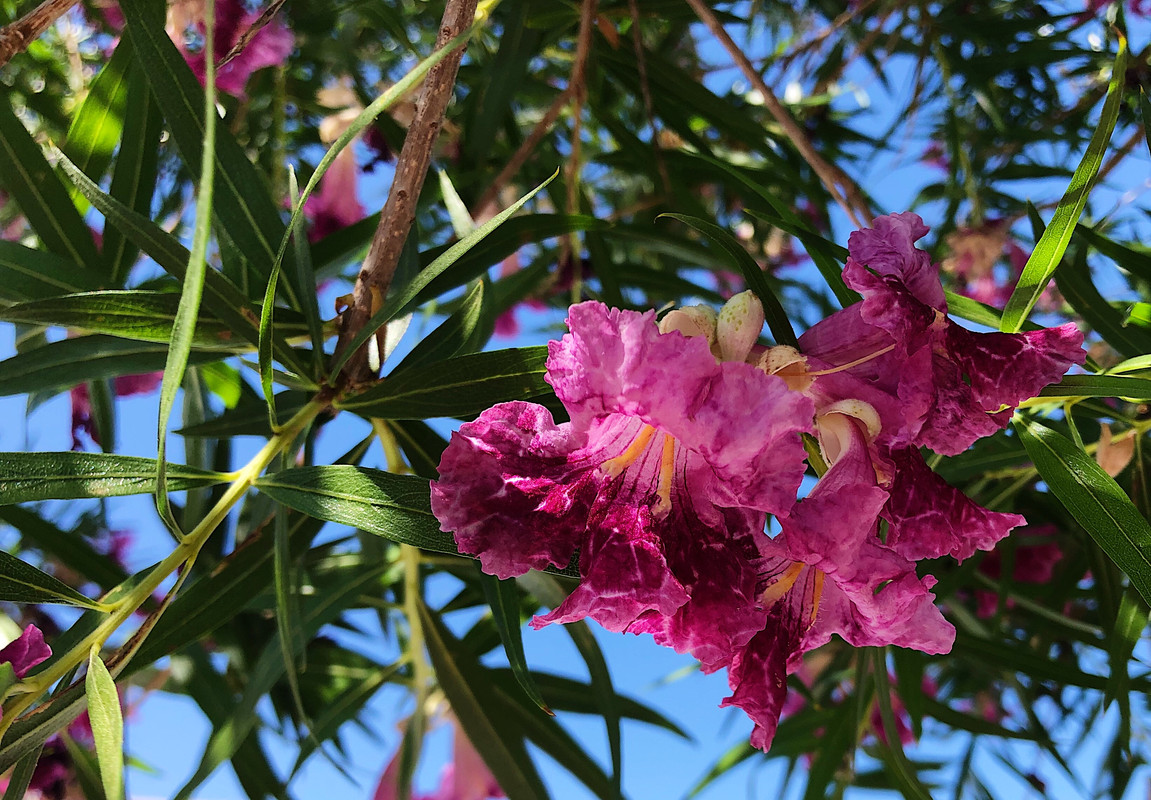June 2020 EcoQuest: Wild for Willow
Join us for the June EcoQuest: Wild for Willow!
Help us find and map Desert Willow (Chilopsis linearis). This month's EcoQuest is in support of the Arizona Native Plant Society.
Join the EcoQuest here:
https://www.inaturalist.org/projects/wild-for-willow
Have you been noticing a tree with big, beautiful violet or light pink blooms lately? It’s likely Desert Willow! This Arizona native plant thrives in our desert heat and continues to display its showy flowers through even the hottest days of summer. Desert Willow makes a great “street tree,” and you can find it in many urban areas.

Not actually a willow, but this tree is a member of the Bignonia family (Bignoniaceae), the same family as Jacaranda. This tree is a great resource for wildlife, providing food, cover, and habitat, especially for birds and pollinators. The cover and shade is enjoyed by people, too! Desert Willow is extremely drought and heat tolerant, and practically pest and disease free. Erosion control and acting as a windbreak are also benefits that it offers. Average height is 20-30 feet with a 15-25 foot spread. The leaves are narrow and long (sometimes 12 inches!). And of course, it has those big, beautiful blooms ranging from violet to nearly white.
Desert Willow is a plant of ethnobotanic significance, meaning it is and has been used by people in many ways, such as food, fiber and medicine.
For the most part, Chilopsis linearis subsp. arcuata is found in Arizona, Utah, Nevada, California and New Mexico. Chilopsis linearis subsp. linearis is usually found east of the Rio Grande River in New Mexico and Texas.
Finding and mapping Desert Willow can provide us with more information about native plants (wild and cultivated) in the metro Phoenix area. Studying occurrences contributes to learning about population size and density. We can also see where wildlife can find food and shelter in an urban setting.
Sources:
https://plants.usda.gov/plantguide/pdf/pg_chli2.pdf
http://swbiodiversity.org/seinet/taxa/index.php?taxon=2566

About the Arizona Native Plant Society: AZNPS is focused on promoting native plant use and conservation. Meetings, field trips and workshops provide the opportunity to build your native plant knowledge and become involved in local conservation work. AZNPS also produces The Plant Press, a biannual publication that includes native plant information, research articles, book reviews, and society happenings. We have a local chapter right here in Phoenix!
Learn more, join, and/or support the Arizona Native Plant Society (AZNPS) here:
https://aznps.com/
There were 558 observations of stinknet for May's EcoQuest: Search for Stinknet!
The Desert Defenders project currently has a total of 1,236 observations! WOW!
If you enjoyed this month's EcoQuest, please consider continuing to support Desert Defenders in mapping this invasive species: https://www.inaturalist.org/projects/stinknet-desert-defenders.
And the "awards" for most observations goes to:
@andybridges with 126
@debbiesak with 109
@kathleendamron with 76
Congratulations and THANK YOU!
It is becoming increasingly important to map stinknet, as well as other invasive species that are high risk fuel for wildfire in the Sonoran Desert, and especially close to home. Your participation can help agencies and organizations identify areas at greater risk when it comes to wildfire. Each observation is an important piece of a larger puzzle. Thank you everyone!






Comentarios
Agregar un comentario